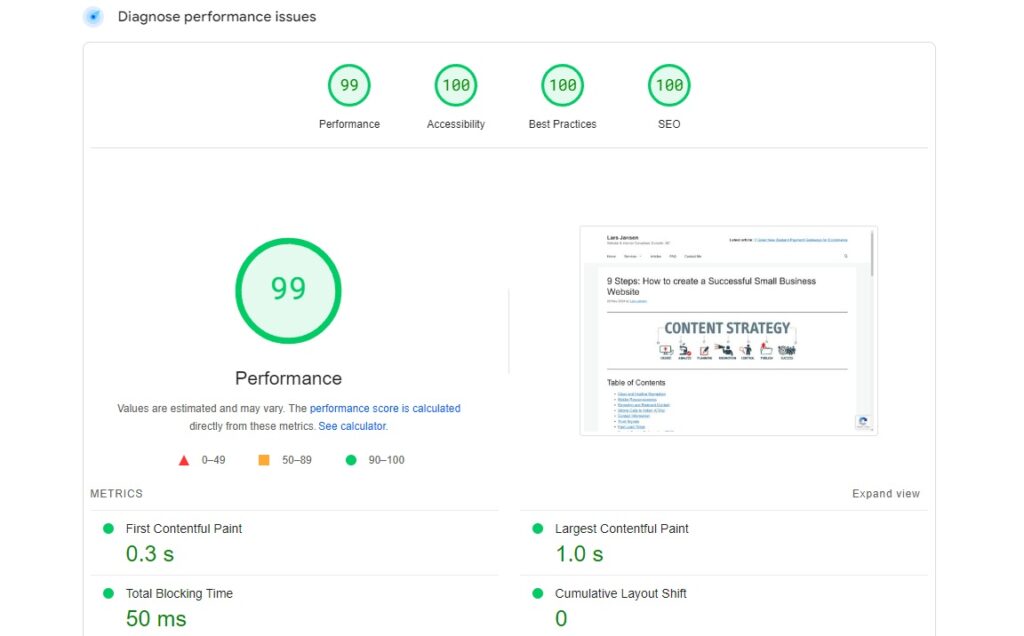How to create a Successful Small Business Website? These days having a strong online presence is crucial for small businesses. Your website is often the first point of contact for potential customers, and it can significantly impact their perception of your brand. A well-designed, functional website not only attracts visitors but also converts them into loyal customers. Here, I outline the essential elements that every small business website should have to ensure success.
Table of Contents
Clear and Intuitive Navigation
A website’s navigation is like a road map for your visitors. It should be straightforward and intuitive, allowing users to find the information they need quickly and easily. Consider the following tips for effective navigation:
- Simple Menu Structure: Limit the number of menu items to avoid overwhelming visitors. Group related pages under clear categories.
- Descriptive Labels: Use clear, descriptive labels for menu items so users know exactly what to expect.
- Search Functionality: Incorporate a search bar to help users find specific content quickly.
- Breadcrumbs: Use breadcrumb trails to show users their current location within the website and how they got there.
Mobile Responsiveness
With more people accessing the internet via smartphones and tablets, having a mobile-responsive website is essential. A responsive design ensures that your site looks and functions well on all devices, providing a seamless user experience. Key aspects include:
- Fluid Grid Layouts: Use fluid grids that adjust to different screen sizes.
- Flexible Images: Ensure images scale appropriately across devices.
- Touch-Friendly Elements: Design buttons and links that are easy to tap on small screens.
- Fast Loading Times: Optimise images and use efficient coding practices to ensure your site loads quickly on mobile devices.
Engaging and Relevant Content
Content is king important when it comes to attracting and retaining visitors. Your website should offer valuable, relevant content that addresses the needs and interests of your target audience. Key types of content to include are:
- Home Page: Clearly state who you are, what you offer, and what sets you apart.
- About Us: Share your story, mission, and values to build a personal connection with visitors.
- Products/Services: Provide detailed information about your offerings, including benefits, features, and pricing.
- Blog: Regularly update your blog with informative articles, industry news, and tips to engage visitors and improve SEO.
- Testimonials: Showcase customer reviews and testimonials to build trust and credibility.
Strong Calls to Action (CTAs)
Effective calls to action guide visitors toward desired actions, such as making a purchase, signing up for a newsletter, or contacting you for more information. To create compelling CTAs:
- Be Clear and Specific: Use concise, action-oriented language that tells visitors exactly what to do.
- Use Contrasting Colours: Make CTAs stand out by using colours that contrast with the rest of your design.
- Place CTAs Strategically: Position CTAs prominently on high-traffic pages and at natural points in the user journey.
- Create a Sense of Urgency: Encourage immediate action with phrases like “Limited Time Offer” or “Sign Up Now.”
Contact Information
Make it easy for visitors to contact you by providing multiple contact options. Essential contact information includes:
- Contact Form: A simple form for visitors to submit inquiries or feedback.
- Phone Number: Display your phone number prominently for those who prefer to call.
- Email Address: Provide an email address for direct communication.
- Physical Address: If you have a physical location, include your address and a map.
- Social Media Links: Link to your social media profiles to encourage further engagement.
Trust Signals
Building trust with your website visitors is crucial for converting them into customers. Incorporate trust signals such as:
- SSL Certificate: Ensure your site is secure with an SSL certificate, indicated by “https://” in the URL.
- Privacy Policy: Clearly outline how you collect, use, and protect visitor data.
- Professional Design: A polished, professional design instils confidence in your brand.
- Customer Reviews: Highlight positive reviews and testimonials from satisfied customers.
- Certifications and Awards: Display any industry certifications, awards, or recognitions you’ve received.
Fast Load Times

Website speed is a critical factor in user experience and search engine ranking. Slow-loading websites can frustrate visitors and lead to higher bounce rates. Optimise your site for speed by:
- Compressing Images: Use image compression tools to reduce file sizes without sacrificing quality.
- Minimizing Code: Remove unnecessary code and optimise CSS, JavaScript, and HTML files.
- Leveraging Browser Caching: Enable caching to store static files, reducing load times for returning visitors.
- Using a Content Delivery Network (CDN): Distribute your content across multiple servers to ensure faster delivery.
Search Engine Optimisation (SEO)
SEO is vital for improving your website’s visibility on search engines like Google. Implementing effective SEO strategies can drive more organic traffic to your site. Focus on:
- Keyword Research: Identify relevant keywords and incorporate them naturally into your content.
- On-Page SEO: Optimise title tags, meta descriptions, headers, and image alt text.
- Quality Content: Publish high-quality, original content that provides value to your audience.
- Internal Linking: Link to other pages on your site to improve navigation and SEO.
- Backlinks: Earn backlinks from reputable websites to boost your site’s authority.
Analytics and Tracking
To continuously improve your website, you need to track its performance. Use analytics tools to monitor key metrics and gain insights into visitor behaviour. Key metrics to track include:
- Traffic Sources: Understand where your visitors are coming from (e.g., search engines, social media, direct traffic).
- Bounce Rate: Measure the percentage of visitors who leave your site after viewing only one page.
- Conversion Rate: Track the percentage of visitors who complete desired actions, such as making a purchase or filling out a contact form.
- User Behaviour: Analyse how visitors navigate your site, which pages they visit, and how long they stay.
How to create a Successful Small Business Website?
Creating a successful small business website involves more than just attractive design. It requires careful planning and attention to detail to ensure a positive user experience and achieve your business goals. By incorporating these essential elements, you can build a website that not only attracts visitors but also converts them into loyal customers. Remember, your website is a reflection of your brand, so invest the time and resources to make it the best it can be. If you are asking yourself “How to create a Successful Small Business Website?” feel free to give me a call!





